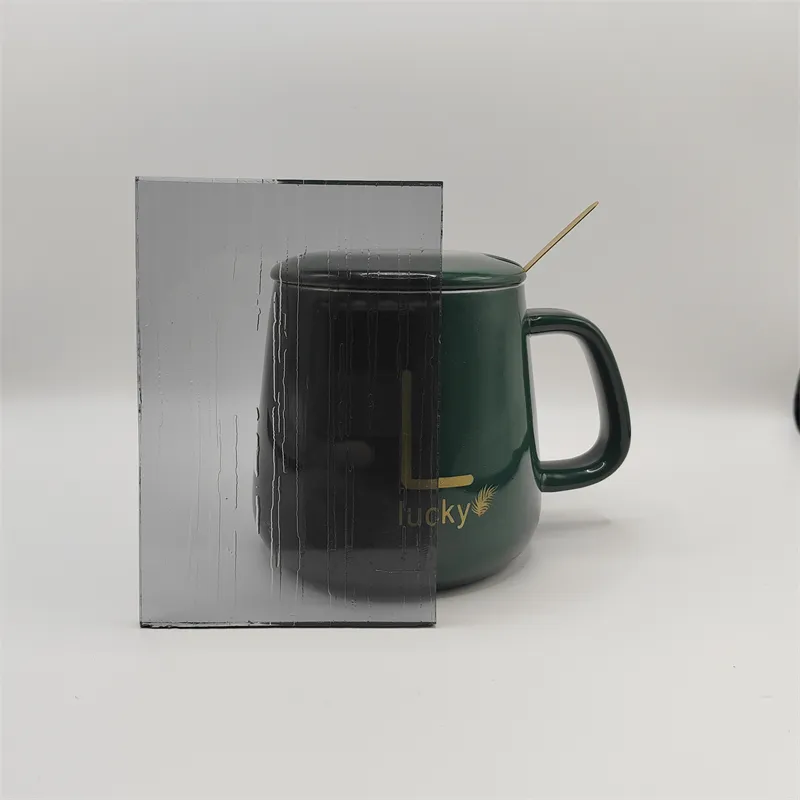12 月 . 03, 2024 17:26 Back to list
what is laminated glass
What is Laminated Glass?
Laminated glass is an innovative type of safety glass typically made by sandwiching a layer of polyvinyl butyral (PVB) or ethylene-vinyl acetate (EVA) between two or more layers of glass. This unique construction process gives laminated glass several beneficial properties, making it a popular choice in various applications, from building facades to automotive windows.
The Manufacturing Process
The creation of laminated glass begins with the selection of high-quality glass sheets. These sheets can vary in thickness and can be treated for additional properties, such as heat resistance or UV filtration. After selecting the glass, a layer of PVB or EVA is placed between the sheets. This interlayer material plays a crucial role in the glass's characteristics, particularly its safety features.
Once the layers are assembled, the glass is subjected to a process known as autoclaving, where heat and pressure are applied to bond the layers together. This method ensures that the interlayer is evenly distributed and properly adheres to the glass surfaces, creating a single solid unit. The final product is not only stronger but also retains visibility and clarity while providing enhanced safety features.
Safety Features
One of the primary benefits of laminated glass is its safety properties. In the event of breakage, laminated glass shatters in a manner that significantly reduces the risk of injury. The interlayer holds the glass fragments together, preventing them from falling and creating hazardous shards. This makes laminated glass an ideal choice for applications where safety is a primary concern, such as schools, hospitals, and public buildings.
Additionally, laminated glass can protect against various external threats, including forced entry, bullets, and flying debris. This quality has made it a popular choice for security applications in banks, museums, and other high-risk environments. The thickness of the layers and the type of interlayer can be tailored to meet specific security needs, providing varying levels of protection based on requirements.
Acoustic Properties
Beyond safety, laminated glass is well-known for its acoustic insulating qualities. The PVB or EVA interlayer acts as a sound barrier, significantly reducing noise transmission. This feature is particularly advantageous in urban environments where noise pollution can be a daily challenge. By utilizing laminated glass, buildings can provide a more comfortable and quieter living or working space.
what is laminated glass

In commercial buildings, laminated glass is commonly used in conference rooms or offices where concentration is vital. Homeowners also benefit from these acoustic properties, finding value in quieter living spaces away from street noise.
Thermal Performance and UV Protection
Another remarkable aspect of laminated glass is its thermal performance. The interlayer improves the energy efficiency of the glass, helping to regulate temperature within buildings. This not only increases comfort but can also lead to reduced energy costs over time.
Furthermore, laminated glass offers UV protection, blocking approximately 99% of harmful ultraviolet rays. This feature is essential for protecting interior furnishings, artwork, and flooring, preventing fading and deterioration over time. For homeowners and businesses alike, maintaining the appearance and integrity of valuable possessions is an important consideration.
Applications of Laminated Glass
Laminated glass finds its applications in many areas, including but not limited to
1. Architecture Used in windows, facades, and skylights, laminated glass provides safety, comfort, and aesthetic appeal. 2. Automotive It is commonly produced for car windshields, where safety and visibility are critical. 3. Furniture Laminated glass is popular in coffee tables, countertops, and display cabinets, offering durability and elegance. 4. Aviation In aircraft, it contributes to cabin safety and passenger comfort.
Conclusion
In summary, laminated glass is a versatile, durable, and highly functional type of glass that excels in safety, acoustics, thermal efficiency, and UV protection. Its unique manufacturing process and composite structure give it remarkable qualities that make it suitable for a wide range of applications. Whether in construction, automotive, or consumer products, laminated glass continues to play a vital role in enhancing safety and comfort while providing aesthetic appeal. As technology evolves, we can expect further innovations in laminated glass, making it an even more integral component of modern design and engineering.
-
Wired Glass: A Strong and Secure Glass Solution for Various Applications
NewsNov.04,2024
-
Tinted Glass: A Stylish and Functional Choice for Modern Homes
NewsNov.04,2024
-
The Elegance and Versatility of Silver Mirrors
NewsNov.04,2024
-
The Advantages of Copper Free Mirrors
NewsNov.04,2024
-
Tempered Glass: A Reliable Choice for Modern Applications
NewsNov.04,2024
-
Pattern Glass: Stylish and Functional Glass for Modern Design
NewsNov.04,2024
Related PRODUCTS














